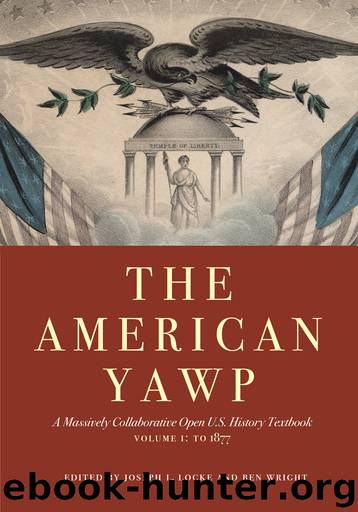The American Yawp by Locke Joseph L. Wright Ben

Author:Locke, Joseph L.,Wright, Ben [Locke, Joseph L.]
Language: eng
Format: epub
Publisher: Stanford University Press
Published: 2018-03-18T16:00:00+00:00
N. Currier, The Propagation Society, More Free Than Welcome, 1855. Library of Congress.
In the 1840s, labor activists organized to limit working hours and protect children in factories. The New England Association of Farmers, Mechanics and Other Workingmen (NEA) mobilized to establish a ten-hour workday across industries. They argued that the ten-hour day would improve the immediate conditions of laborers by allowing “time and opportunities for intellectual and moral improvement.”48 After a citywide strike in Boston in 1835, the Ten-Hour Movement quickly spread to other major cities such as Philadelphia. The campaign for leisure time was part of the male working-class effort to expose the hollowness of the paternalistic claims of employers and their rhetoric of moral superiority.49
Women, a dominant labor source for factories since the early 1800s, launched some of the earliest strikes for better conditions. Textile operatives in Lowell, Massachusetts, “turned out” (walked off) their jobs in 1834 and 1836. During the Ten-Hour Movement of the 1840s, female operatives provided crucial support. Under the leadership of Sarah Bagley, the Lowell Female Labor Reform Association organized petition drives that drew thousands of signatures from “mill girls.” Like male activists, Bagley and her associates used the desire for mental improvement as a central argument for reform. An 1847 editorial in the Voice of Industry, a labor newspaper published by Bagley, asked, “who, after thirteen hours of steady application to monotonous work, can sit down and apply her mind to deep and long continued thought?”50 Despite the widespread support for a ten-hour day, the movement achieved only partial success. President Martin Van Buren established a ten-hour-day policy for laborers on federal public works projects. New Hampshire passed a statewide law in 1847, and Pennsylvania followed a year later. Both states, however, allowed workers to voluntarily consent to work more than ten hours per day.
In 1842, child labor became a dominant issue in the American labor movement. The protection of child laborers gained more middle-class support than the protection of adult workers. A petition from parents in Fall River, a southern Massachusetts mill town that employed a high portion of child workers, asked the legislature for a law “prohibiting the employment of children in manufacturing establishments at an age and for a number of hours which must be permanently injurious to their health and inconsistent with the education which is essential to their welfare.”51 Massachusetts quickly passed a law prohibiting children under age twelve from working more than ten hours a day. By the midnineteenth century, every state in New England had followed Massachusetts’s lead. Between the 1840s and 1860s, these statutes slowly extended the age of protection of labor and the assurance of schooling. Throughout the region, public officials agreed that young children (between ages nine and twelve) should be prevented from working in dangerous occupations, and older children (between ages twelve and fifteen) should balance their labor with education and time for leisure.52
Male workers sought to improve their income and working conditions to create a household that kept women and children protected within the domestic sphere.
Download
This site does not store any files on its server. We only index and link to content provided by other sites. Please contact the content providers to delete copyright contents if any and email us, we'll remove relevant links or contents immediately.
| Africa | Americas |
| Arctic & Antarctica | Asia |
| Australia & Oceania | Europe |
| Middle East | Russia |
| United States | World |
| Ancient Civilizations | Military |
| Historical Study & Educational Resources |
In Cold Blood by Truman Capote(3141)
Steve Jobs by Walter Isaacson(2766)
The Innovators: How a Group of Hackers, Geniuses, and Geeks Created the Digital Revolution by Walter Isaacson(2512)
All the President's Men by Carl Bernstein & Bob Woodward(2267)
Lonely Planet New York City by Lonely Planet(2108)
The Room Where It Happened by John Bolton;(2034)
And the Band Played On by Randy Shilts(2020)
The Murder of Marilyn Monroe by Jay Margolis(1984)
The Poisoner's Handbook by Deborah Blum(1984)
The Innovators by Walter Isaacson(1974)
Lincoln by David Herbert Donald(1874)
A Colony in a Nation by Chris Hayes(1797)
Under the Banner of Heaven: A Story of Violent Faith by Jon Krakauer(1687)
Amelia Earhart by Doris L. Rich(1588)
The Unsettlers by Mark Sundeen(1586)
Birdmen by Lawrence Goldstone(1536)
Dirt by Bill Buford(1523)
Zeitoun by Dave Eggers(1519)
Decision Points by George W. Bush(1466)
